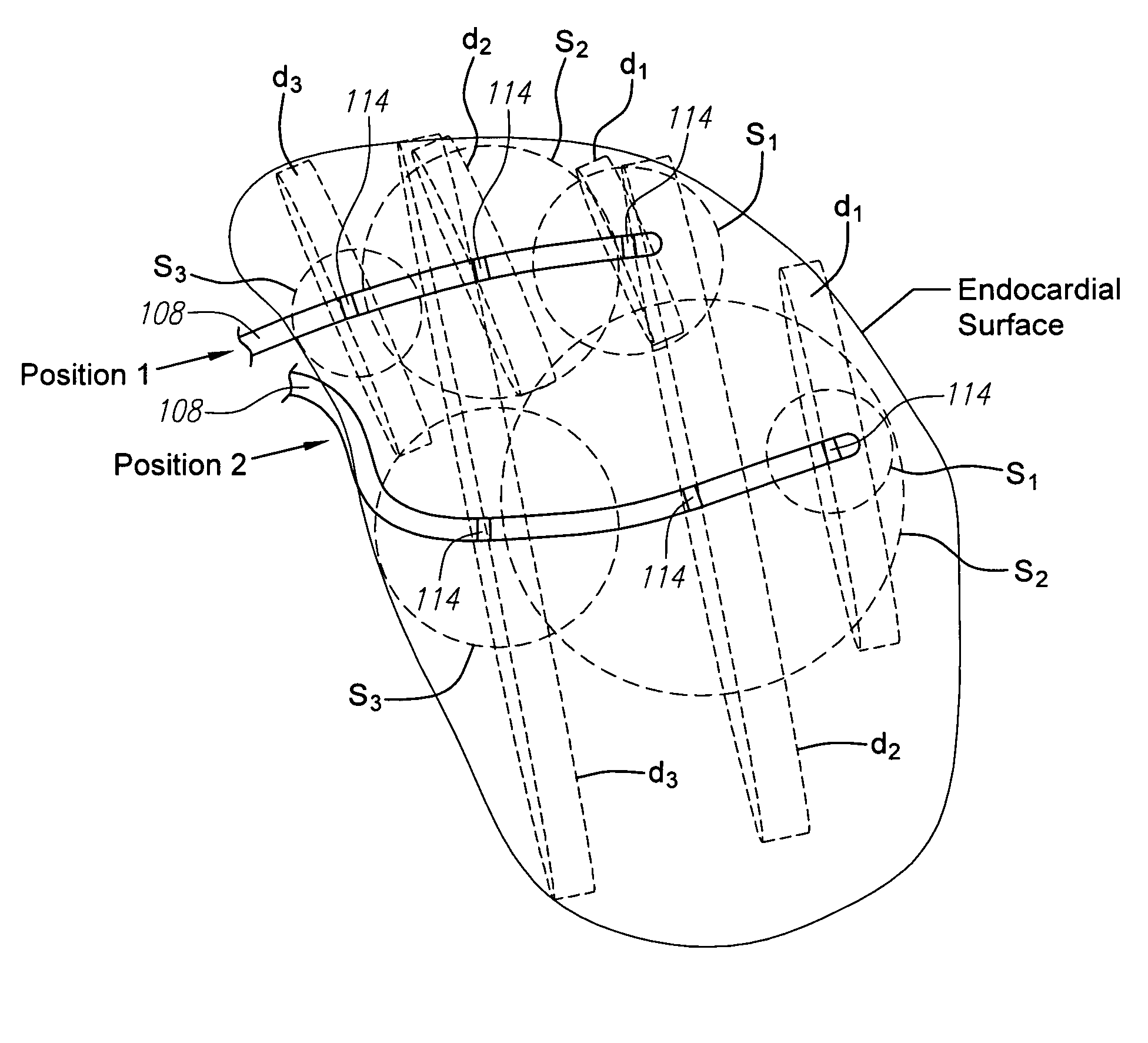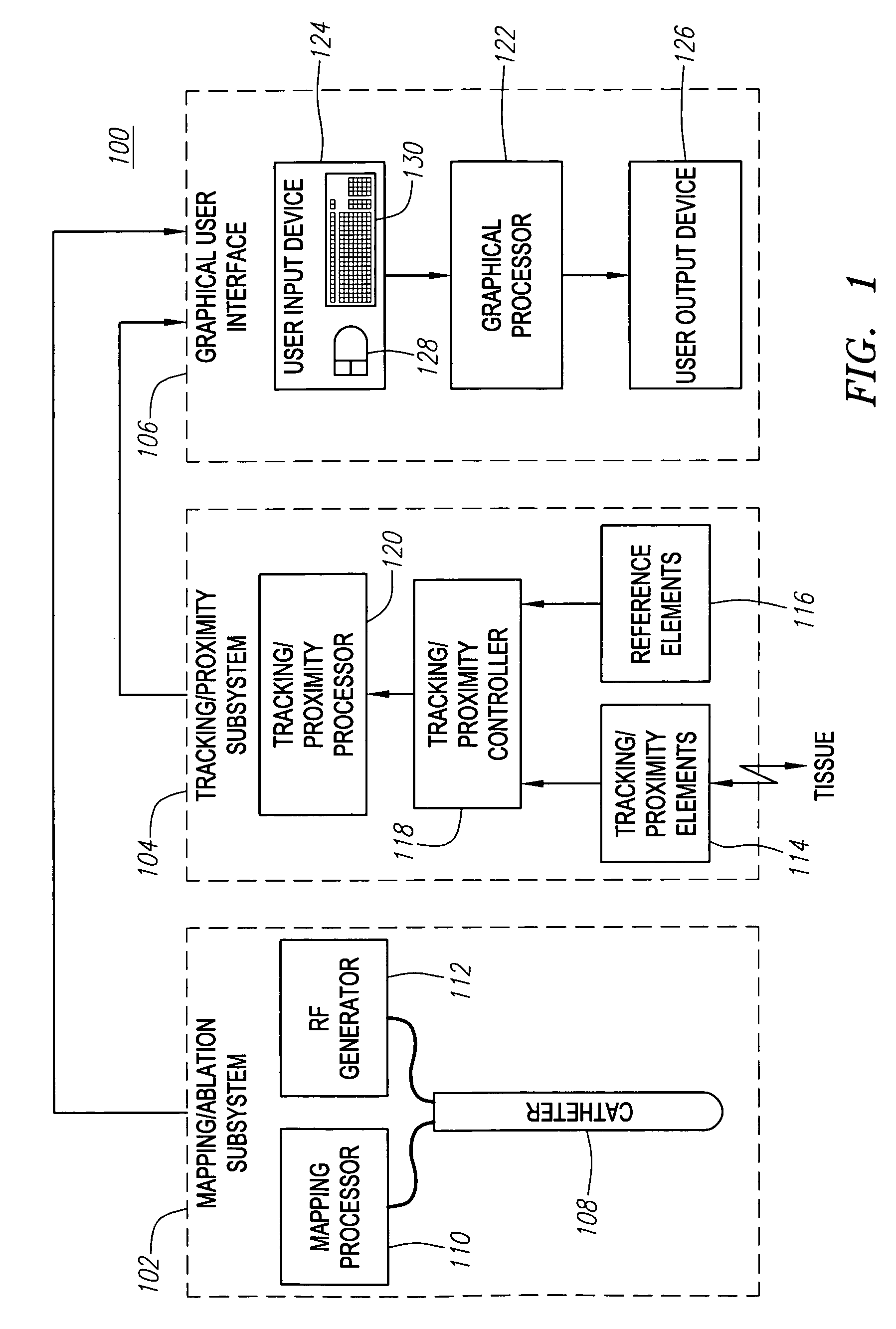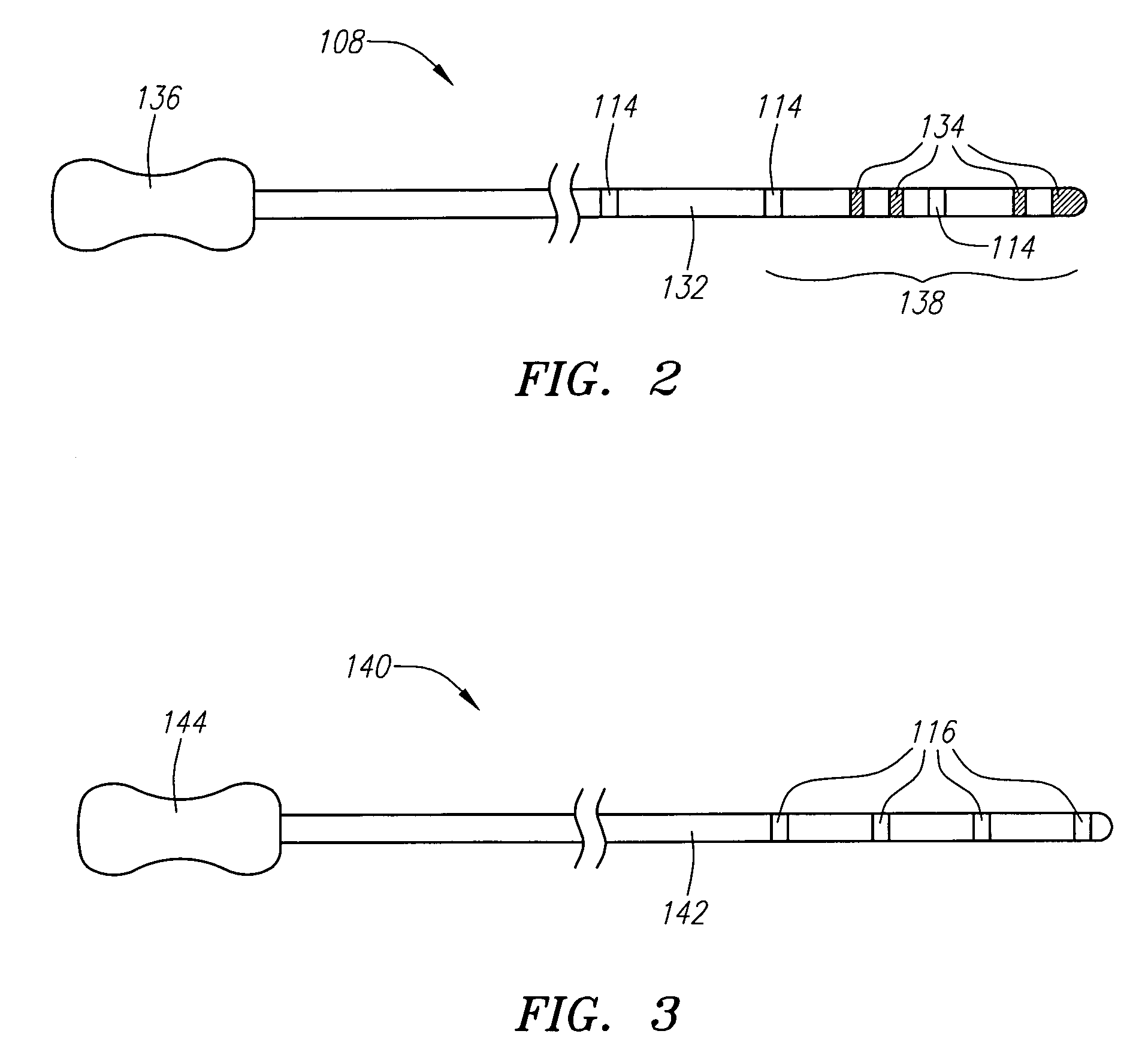System and method of graphically generating anatomical structures using ultrasound echo information
a graphic and anatomical technology, applied in the field of medical probes, can solve the problems of inaccuracy of graphical representation, difficulty for physicians to visualize anatomy features as a reference for navigation, and limited use of fluoroscopy in locating catheters, etc., to achieve the effect of increasing the efficiency and/or accuracy of graphical anatomical representation
- Summary
- Abstract
- Description
- Claims
- Application Information
AI Technical Summary
Benefits of technology
Problems solved by technology
Method used
Image
Examples
Embodiment Construction
[0037]Referring to FIG. 1, an exemplary medical system 100 constructed in accordance with the present invention will be described. The medical system 100 is particularly suited for mapping and treating a heart with catheters. Nevertheless, it should be appreciated that similar types of medical systems can be used for treating, diagnosing, or otherwise graphically reconstructing other internal hollow anatomical structures, and can be used with medical devices other than catheters. The medical system 100 generally comprises (1) a mapping / ablation subsystem 102 for mapping and ablating tissue within the heart; (2) a tracking / proximity subsystem 104 for generating and receiving ranging signals used to measure distances within the heart; and (3) a graphical user interface 106 configured for generating and displaying graphics of the heart, electrical activity information, and medical devices within a three-dimensional coordinate system based on the ultrasound ranging signals. It should be...
PUM
 Login to View More
Login to View More Abstract
Description
Claims
Application Information
 Login to View More
Login to View More - R&D
- Intellectual Property
- Life Sciences
- Materials
- Tech Scout
- Unparalleled Data Quality
- Higher Quality Content
- 60% Fewer Hallucinations
Browse by: Latest US Patents, China's latest patents, Technical Efficacy Thesaurus, Application Domain, Technology Topic, Popular Technical Reports.
© 2025 PatSnap. All rights reserved.Legal|Privacy policy|Modern Slavery Act Transparency Statement|Sitemap|About US| Contact US: help@patsnap.com



